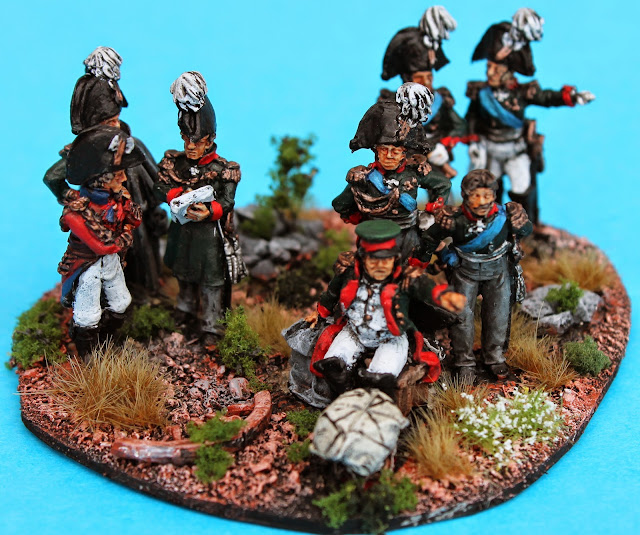It is not unusual for me to have several projects on the go at once. And at this point of time I have three on the go.
• the Crimean War project
• the Russo-Japanese War project
• the WWI in East Africa project.
Crimea is on hold at present...at least until the end of the month.
The Russo-Japanese War project is progressing. I have just finished four new Russian guns and crews. Six more Japanese guns have arrived and waiting assembly, with another six to order early next year.
As for the WWI in East Africa project, well the unit of Sikh infantry is based, but no other figures are in the pipeline until next year. But to keep the project in focus I have decided to make the scenery for this period the summer project. The plan is to make an African village, a plantation house and some kopjes. It is the last item I have decided to attack first.
Kopjes are common sights in East Africa. They are areas of limestone that rise abruptly out of an eroded plain. Often a refuge for wildlife from wildfires and other natural events they are frequently surrounded by clumps of vegitation. They make an interesting feature for an East African terrain. I have decided to make four of these: one large, one small and two of medium size.
I looked at using some natural stones - there are some really nice sized and shaped ones on the temporary gravel carpark next to where I work. But then I changed my mind, in part because the carpark is in full view of the other inhabitants of my office and although they probably already doubt my sanity, I don't really want to give them more ammunition by seeing me collect stones from the carpark, and in part because natural stone would make them quite heavy. Instead I am going to make them from polystyrene and describe the construction of the small one here.
The first step is to cut a piece from a sheet of 25mm thick polystyrene about 130mm square. I then cut off the corners, to make a rather irregular octagon. I keep the corner pieces for use in building up fhe rocky centre of the kopje.
Next is to carve the slope of the hill. I want part of one face to have a steep edge to it, but the rest are to slope more gently towards an area with a diameter of perhaps 70mm in the centre of the hill.
Now to work on the rocks that will jut from the ground. On this one I want a series of columular formations that rise at odd angles, so I cut a strip of polystyrene that is 25mm by 25mm and about 120mm long. I then cut several irregular lengths from that and glue them in varuous configurations to the hill. To provide some varying shapes I add some of the triangular off-cuts. At this point I am not too concerned about getting anything like a rock shape, just the general layout of the rocks. I leave the glue to dry overnight.
Next day, with the glue dry, I carve the blocks of polystrene into rock shapes, rounding out the square edges and cutting into the surface of the blocks to create fissures.
When I have the shapes I want I get out the PVA glue and one at a time I coat the rocks with glue and then press toilet paper or klenex over the form. I then coat that tissue with more PVA and brush it against the polystyrene. The tissue will wrinkle and bunch to create an irregular surface. If I don't get enough texture, I add more tissue and glue. When all of the rock surface is covered I leave it to dry overnight.
Next day I coat the non-rock surface of the hill with PVA and cover the glue with a coarse builder's sand and let it dry. I add some kitty litter as smaller rocks that have fallen away from the main rock formations.
With the sand dry I undercoated whole piece with black. I prefer to use a black underciat on terrain because it is easier to get depth into the model. When that dried I started on the main painting, drybrushing some terracotta, toned with a touch of red over the sand because I wanted the soil colour to be fairly red, remembering the colour of the soil during my time in Tanzania. The rocks themselves were painted grey, starting with a fairly dark hue and then lightening to an almost white highlight.
I then moved on to the final touches. I added areas of grass flock on the slopes, then clumps of Woodland Scenics foliage around the base of the rocks and in isolated patches around the base. I added a few bushes and a couple of logs. Made from twigs from the garden. And it is done.
Below is the finished product together with one of the medium kopjes (the last two images).























































